The Santuary
Wednesday, August 21, 2013
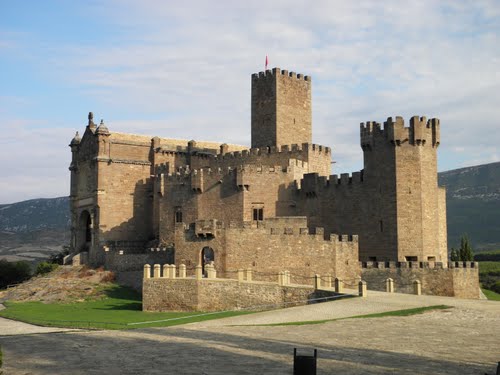
A silhouette of crenelated towers cuts the horizon, welcoming your arrival at the Castle of Javier, the birthplace of San Francisco Javier (St Francis Xavier), patron saint of Navarre, centre of religious missions and tourism in Spain.
The fortress stands on a rock outcrop 8 kilometres from Sangüesa in the Central Zone of Navarre. Every year in early March the castle is the destination of thousands of people from all over Navarre in the popular pilgrimage known as the Javierada.
Cross the drawbridge and enter a world of towers, dungeons, machicolations, embrasures and arrow slits, enabling you to get to know the place where Francis Xavier was born (1506) and lived. He was later the co-founder of the Society of Jesus (Jesuits) and one of the most universal missionaries.
Near the border with Zaragoza (Saragossa) province, at the highest part of the small village of Javier, stands  the imposing silhouette of the Castle of Javier, the birthplace of the patron saint of Navarre, San Francisco Javier (St Francis Xavier). the imposing silhouette of the Castle of Javier, the birthplace of the patron saint of Navarre, San Francisco Javier (St Francis Xavier).
The origins of the castle go back to the end of the 10th century when a signal tower was built called la torre del Homenaje (Tribute Tower). Its strategic location on the border between the kingdoms of Navarre and Aragon reinforced its role as a fortress, and the different sections of the castle were gradually added on.
In 1516, Cardinal Cisneros ordered an attack on the castle and it was partially destroyed, and at the end of the 19th century the basilica was built next to the castle. Reconstruction work on the castle begun in 1952 gave the fortress its original appearance and nowadays it is one of the few castles that conserve its defences and structures such as machicolations and arrow slits.
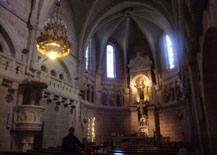 Francisco de Javier was born into a noble family and was the sixth child of Juan de Jasso, an important figure in the kingdom of Navarra, and María de Azpilicueta. He left for Paris at 19 years of age to study in the Sorbonne, where he met Ignatius of Loyola, with whom he was later to found the Society of Jesus (the Jesuits). Francisco de Javier was born into a noble family and was the sixth child of Juan de Jasso, an important figure in the kingdom of Navarra, and María de Azpilicueta. He left for Paris at 19 years of age to study in the Sorbonne, where he met Ignatius of Loyola, with whom he was later to found the Society of Jesus (the Jesuits).
This is where his evangelising zeal emerged, which led him to travel to thousands of cities, towns and villages in Africa and Asia for 11 years, until he died of pneumonia on December 3rd 1552 at the age of 46 when he was about to enter the Chinese Empire. Five centuries later, he has left his mark in all the places he visited, and in his native land, Navarre, he is loved, revered and admired.
On the first two weekends of March a popular pilgrimage known as the Javierada takes place to the Castle of Javier, in which thousands of people from all over Navarre travel great distances on foot to venerate the Saint.
The origin of this tradition goes back to 1886, when the help of St Francis Xavier was invoked to stop the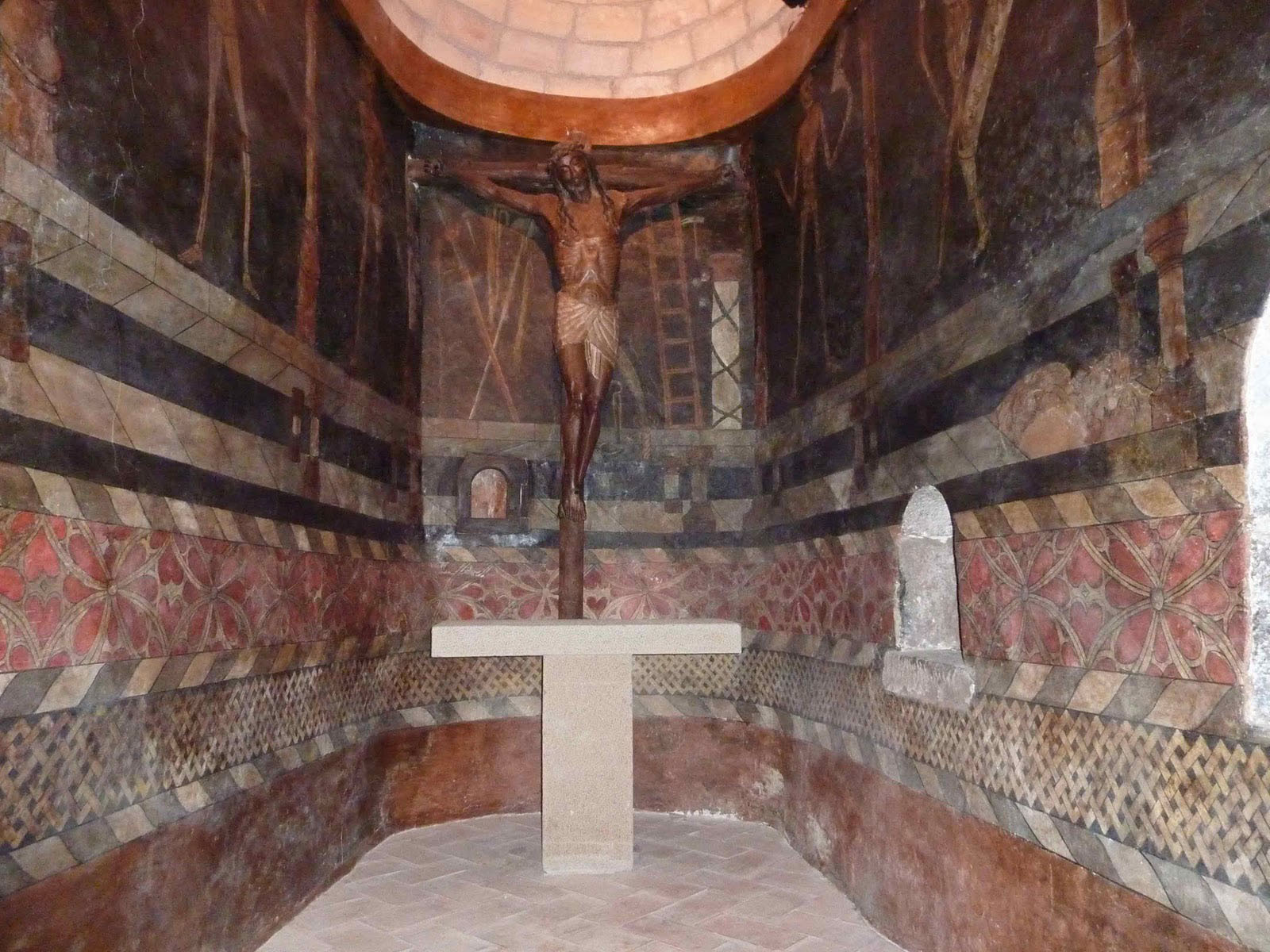 cholera epidemic that was decimating Navarre; in gratitude for the fulfilment of this desire, the people made a promise to make a pilgrimage to Javier. cholera epidemic that was decimating Navarre; in gratitude for the fulfilment of this desire, the people made a promise to make a pilgrimage to Javier.
You start in the entrance hall, going through the main door to the castle, where you can see a stone relief with three shields separated by angels, representing the family coat of arms. You go through the stables and down into the basement, where the bodegas (wine cellars) used to be.
A set of dioramas reveals small details of the saint's life, and from here you pass into the main floor with an exhibition of objects from the old castle, souvenirs of the Saint and a model of the old building. This museum is divided into three sections: 1) history of the building, 2) Javier and Navarra in history, and 3) the art gallery, where the highlight are the Flemish canvases by Maes. Finally, a ramp takes us up to the other rooms in the castle.
You start the visit in the Sala de Escudos, decorated with the coats of arms of Francis Xavier's parents and his family tree. Passing through a stone door you gain access to the Sala Principal or Grande (main room), a place for receiving visitors and where the family spent most time. Then we go up the steps to the Torre de Undués until we reach the Camino de Ronda (battlements), a protected corridor for the defence of the castle. Stones and boiling oil were often poured over attackers through the machicolation!
Leaving the chaplains' rooms (now an oratory) on the left, you enter the old heart of the castle. There are two rooms here around the Tribute Tower, the oldest construction of its type in Navarre. The room on the right was the bedroom of St Francis Xavier, and on the left is the chapel of San Miguel (St Michael), the first one in the castle. Walk out onto the adjacent terrace, where you will get a sense of the strategic location of the castle, and enjoy the spectacular views: to the north, the Sierra de Leyre, to the west, the flood plain of the river Aragon, to the right, the frontier with Aragon, and to the south, the area known as El Castellar.
You then descend to the bottom of the tower, where a corridor takes us to the Hall of the castle and the capilla del Santo Cristo (chapel of the Holy Christ). Behind a grille stands the Christ of Javier, an impressive 16th-century Gothic image carved in walnut. According to tradition, the figure sweated blood when the Saint was dying in Sanchuan, an island off the coast of China. It is surrounded by a dramatic mediaeval fresco, the only Gothic representation of the Dance of Death that exists in Spain.
Going down the stairs you come to the inner courtyard/parade ground and you exit through the gate. At your feet are the old steps, and on the left (breaking with the construction style of the castle) is the wall of the Basílica, built in the 19th century on the site of the Palacio Nuevo (New Palace) built by the parents of Francis Xavier, where he was born. The tour ends back at the starting point, the entrance hall.
Once the visit to the castle has ended, do not miss the eclectic Basilica, whose façade contains images from the life of Francis Xavier.
A multi-purpose hall called the 'Aula Francisco de Jasso' has been built for the 5th Centenary of the birth of the saint, with capacity for 1,300 people, and also the 'Georg Schurhammer' exhibition hall, with the personal archives of the greatest biographer of Francis Xavier, specially brought from Rome.
 0
Like
Published at 1:53 PM Comments (2)
0
Like
Published at 1:53 PM Comments (2)
La Gomera, a true living fossil
Thursday, August 8, 2013
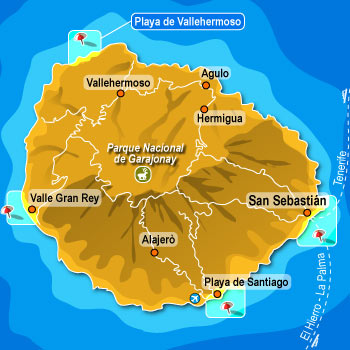 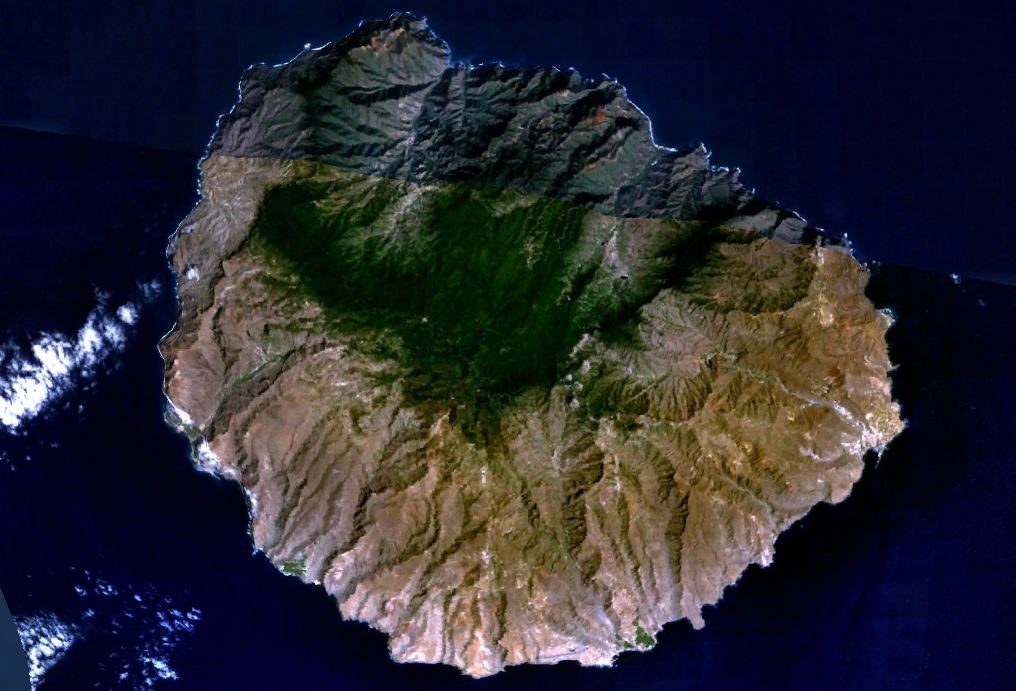
La Gomera is one of the most beautiful of the volcanic Canary Islands. Although it is the 3rd youngest of all the islands, it is very much extinct as it stopped erupting about 3 million years ago.
La Gomera is well known for its steep and rugged land. The difficult conditions of life that the people of the Island had to endure, has on many occasions forced them to seek a better life and often in South American territories. This reality is described in the epic story of the "Telemachus", the most legendary example. The sailboat Telemachus, 27 meters long and designed for the coasting trade between the islands, sailed from Valle Gran Rey on the 10th of August 1950, to Venezuela, with 170 men and a woman.Two terrible storms, water and food shortages, and even a mutiny made up this journey that ended 43 days later on the coast of Venezuela.
The island is roughly circular in shape and is about 22 km in diameter and rises to 1487 m (nearly 5000 feet) at the island's highest peak, Alto de Garajonay. Its shape is rather like an orange that has been cut into segments, which has left deep ravines or "barrancos" between them. The uppermost slopes of these barrancos are covered by the laurisilva - or laurel rain forest.
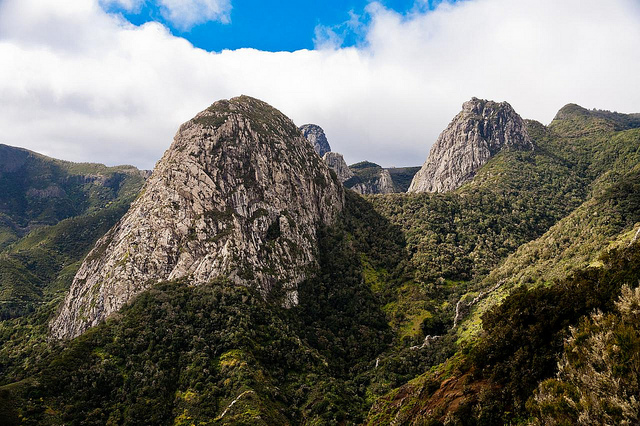
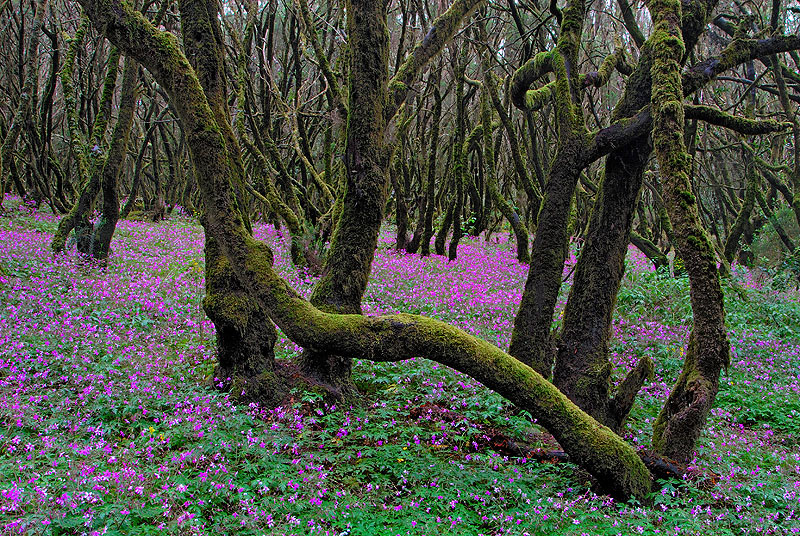
The upper reaches of this densely wooded region are almost permanently shrouded in clouds and mist, and as a result are covered in lush and diverse vegetation: they form the protected environment of Spain's Garajonay National Park, which was declared a UNESCO World Heritage Site in 1986. The slopes are criss-crossed by paths that present varying levels of difficulty to visitors, and stunning views to seasoned hikers.
The central mountains catch the moisture from the trade wind clouds and yield a dense jungle climate in the cooler air, which contrasts with the warmer, sun-baked cliffs near sea level.
Between these extremes there are a vast number of microclimates; for centuries, the inhabitants of La Gomera have farmed the lower levels by channelling runoff water to irrigate their vineyards, orchards and banana groves. This is park is one of the main attractions that La Gomera has to offer and was named after the legend of two lovers, Gara, Princess of La Gomera and Jonay, from Tenerife. The two lovers faced the disapproval of their love from their family, and decided to kill themselves by jumping from the highest peak of the island.
Garajonay's dense forest is made up of vast variety of different plant species, often surrounded by a sea of fog that gives the forest a magical aspect. These fogs are vital for the forest, producing the necessary moisture essential for the survival of this lavish green environment located within an otherwise arid island. Its existence is possible thanks to the high humidity and the mild temperatures, accompanied by little fluctuations during the year.
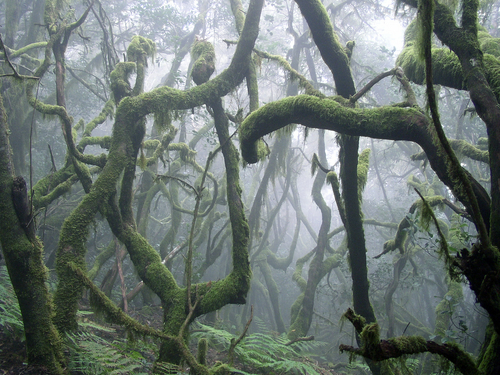
This forest of Canarian laurisilva covers an area of 4,000 hectares, representing about 11 percent of the total area of the island. It is a relic of the subtropical forests that occupied much of Europe and North Africa several million of years ago, so "Garajonay" can be considered a true living fossil.
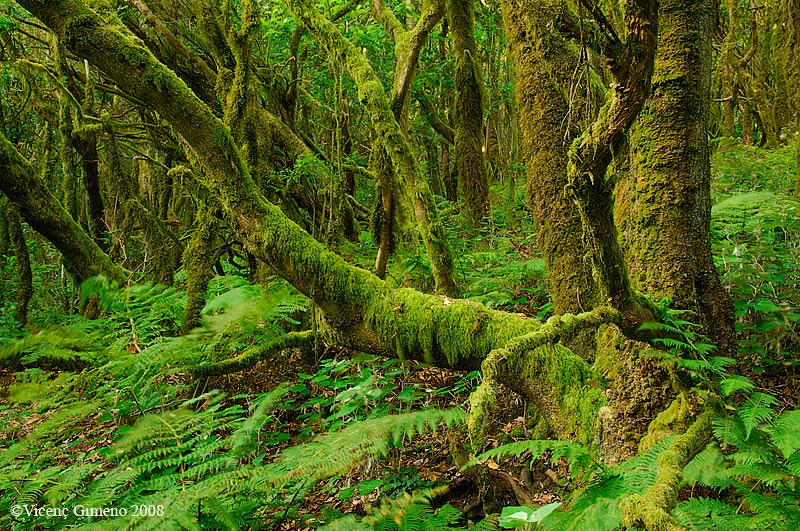
The Garajonay forest is thriving with different types of vegetation. There are about 2000 species of plants in the Park, and a high number of endemic species unique to this particular island and to the rest of the Canary Islands. Among the different forest types that can be found are the Dry Heath Fayal, in areas where there is less moisture, and the predominant species: the Mocan, the Palo Blanco, the Barbusano, heather and faille, amongst others. Throughout the park one can discover a network of streams, permanent water flows that are the best preserved of the Canaries.
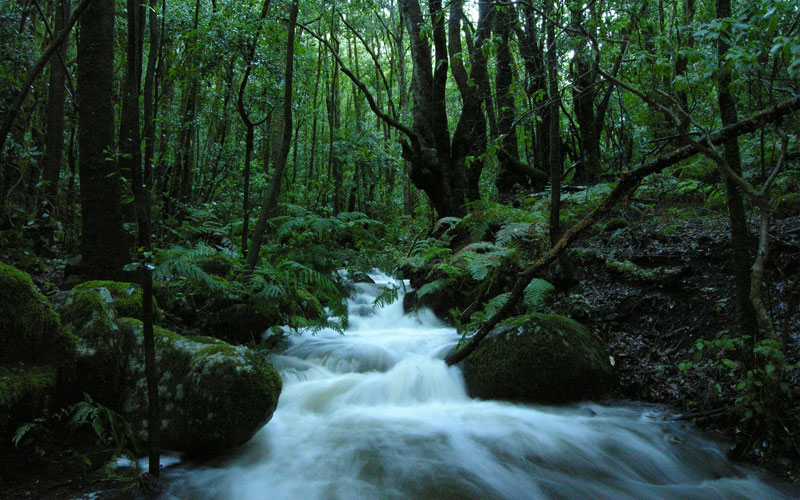
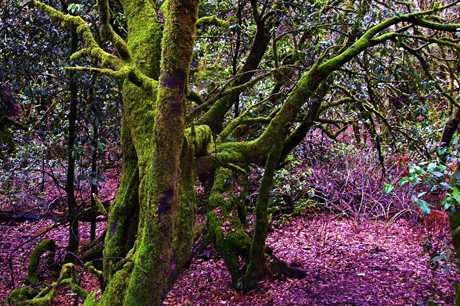
The varieties of habitats in the park are rich and diverse in fauna, consisting of invertebrates, vertebrates, amphibians, reptiles and birds, many of them endemic. Within this latter group the “Rabiche” pigeon and the “Turque” pigeon are most common.
The park is extremely well set up for visitors offering a wide infrastructure of facilities and services allowing anyone to really enjoy and better understand this truly natural gem of nature.
In these very Forests, the original inhabitants of La Gomera, The Guanches, worshipped their god, whom they called Orahan; the summit and centre of the island served as their grand sanctuary. Indeed, many of the natives took refuge in this sacred territory in 1489, as they faced imminent defeat at the hands of the Spaniards, and it was here that the conquest of La Gomera was drawn to a close. Modern-day archaeologists have found several ceremonial stone constructions here, which appear to represent sacrificial altar stones, slate hollows or cavities. It was here that the Guanches built pyres upon which to make offerings of goats and sheep to their god. This same god, Orahan, was known on La Palma as Abora and on Tenerife and Gran Canaria as Arocan. The Guanches also interred their dead in caves, which still dot the landscape.
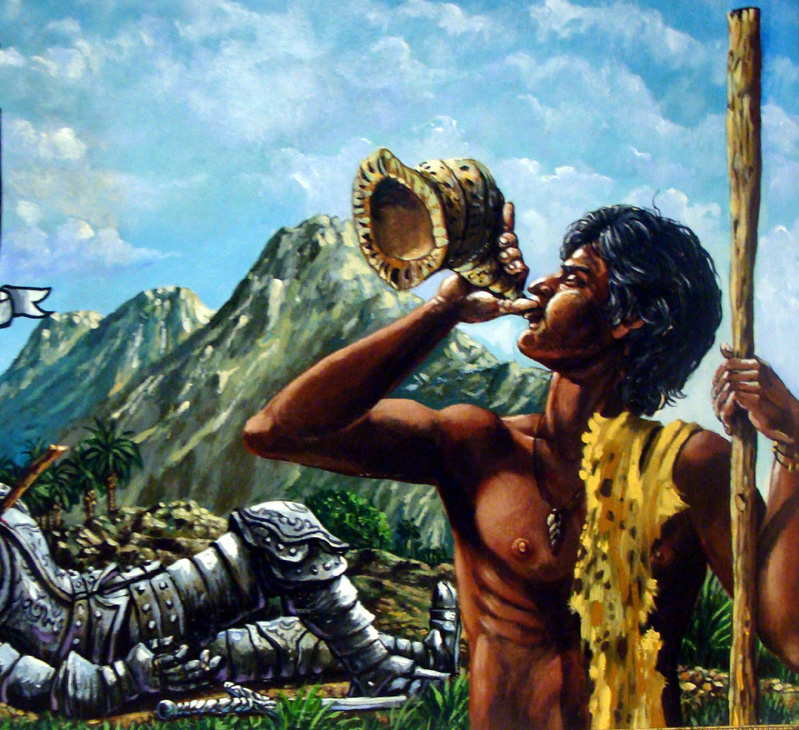
Christopher Columbus made La Gomera his last port of call before crossing the Atlantic in 1492 with his three ships. He stopped here to replenish his crew's food and water supplies, intending to stay only four days. Beatriz de Bobadilla y Ossorio, the Countess of La Gomera and widow of Hernán Peraza the Younger, offered him vital support in preparations of the fleet and he ended up staying one month. When he finally set sail on September 6, 1492 she gave him cuttings of sugarcane, which became the first to reach the New World. After his first voyage of Discovery, Columbus again provisioned his ships at the port of San Sebastián de La Gomera in 1493 on his second voyage to the New World, commanding a fleet of 17 vessels. He visited La Gomera for the last time in 1498 on his third voyage to the Americas. The house in San Sebastián in which he is reputed to have stayed is now a tourist attraction.
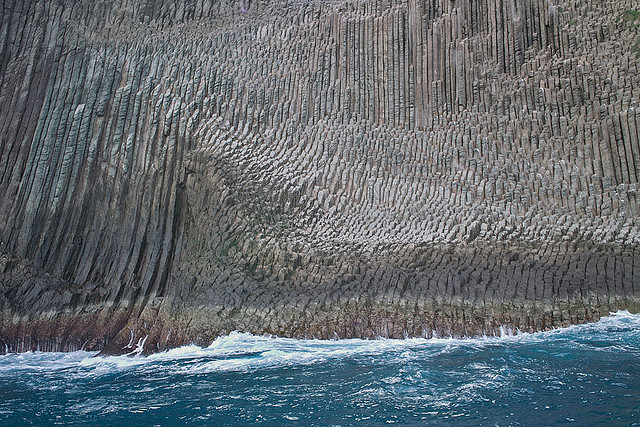
Another distinctive landmark of La Gomera is an unusual volcanic rock formation called “Los Organos” which is found in the northern region of Vallehermoso. It is fact a magnificent display of balsalt columns and some of the most spectacular of anywhere in the world, similar to the Giant’s Causeway in Ireland or Fingal’s Cave in Scotland but only much higher. This wonder of nature, unfortunately, can only be appreciated from the sea but there are regular boat trips to go out and enjoy this beautiful sight while at the same time enjoying some local whale watching. The reason they are called “Los Organos” (The organs) is fairly self-explanatory, as they resemble the metal pipes of a cathedral organ. The explanation for this particular formation is that this volcanic rock face was in fact the inner wall of the volcano’s mouth and when it entered into eruption the lava rose up but progressively rose with more and more difficulty as the lava became denser and cooled down. Eventually the Volcano split apart leaving the rock face open for the world to see. The wall stretches to a height of 262ft and has a width of 575ft. Some of the individual “organ pipes” are over 3ft wide.
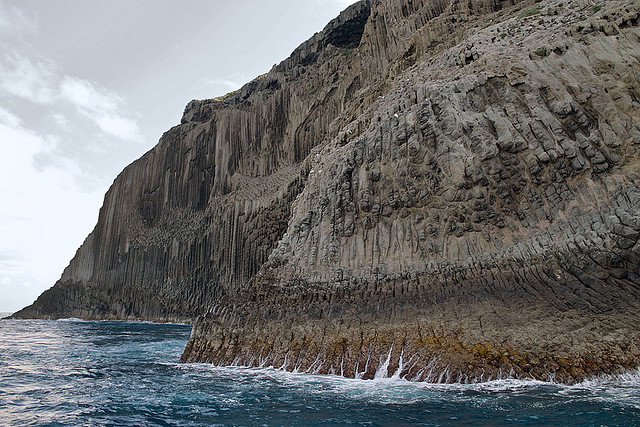
Ver mapa más grande
 0
Like
Published at 8:34 PM Comments (5)
0
Like
Published at 8:34 PM Comments (5)
The last of a kind - Tossa de Mar
Wednesday, August 7, 2013
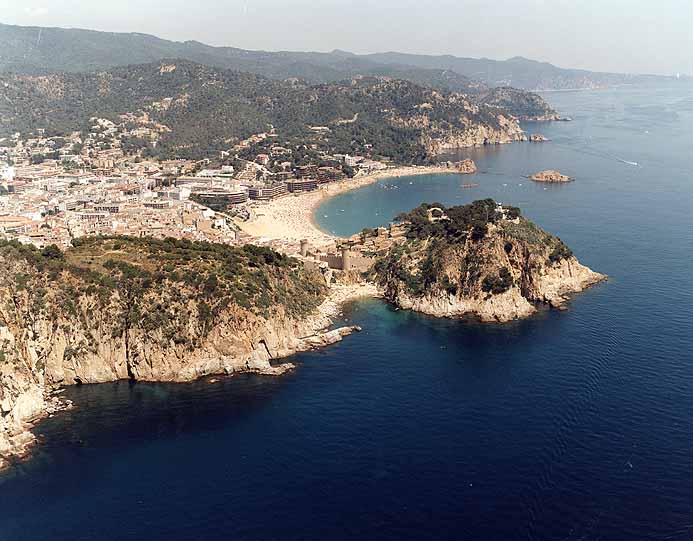
Earliest history has it that , in 1236, a preaching Friar (Ramon de Penyafort) arrived at Tossa de Mar and legend says that the rocks opened so that he could land on the beach. Tossa de Mar has managed to escape the worst end of the tourist market and it possess a refreshing atmosphere of quality that is missing in nearby Lloret de Mar, Blanes and Malgrat de Mar. The town avoided the blight of the coastal railway line that forges its way along the beachfront of all coastal towns from Barcelona to Blanes permitting Tossa de Mar to remain rustic and more traditional. Tossa is like an open-air museum where prehistoric remains overlap with Roman Turissa, medieval Tursa and today's Tossa, one-time a retreat for artists and intellectuals and now a town for Spanish tourists and foreign visitors.
The history of Tossa de Mar is extense and there is ample evidence of settlements dating back to the Neolithic period, and it is believed that the area has been continuously populated since that time. Between the 4th century BC and the 1st century BC appeared the first settlements of the Iberians, followed shortly after by the Romans in the 1st century.
The most noteworthy of the Roman villas in the area is undoubtedly Els Ametllers,
Els Ametllers (1st c. BC - 6th c. AD), discovered in 1914 by Dr Ignasi Melé, was one of the most important villas in the ancient Roman province of Tarraco. This is a classic example of a Roman Mediterranean farming establishment, where vineyards were tended and large quantities of wine were exported.
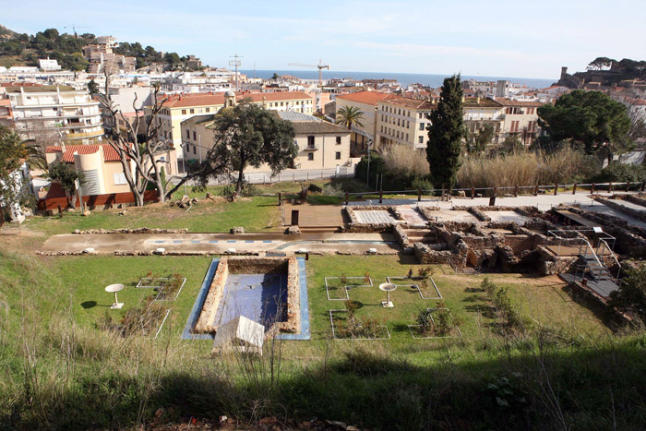
The noble dwelling area on the upper level of the site, reflects the overall magnificence of this villa, especially in the 2nd century AD. Its exceptional splendour can be seen in the fine thermal baths, the mosaics and stuccos, the unusual winter dining room, the fountain (nymphaeum) and the bathing pool with its impressive Carrara marble sculptures (now kept in Tossa Municipal Museum).
The functional area on the lower level, had grain houses and other rooms used for processing the villa’s agricultural produce, e.g. wine, oil and salted goods.
Bone and ivory styluses, ceramics, coins and brooches (fibulae) on display in Tossa Municipal Museum bear witness to the daily life of the villa.
In 966 Tossa was ceded by Count Miró of Barcelona to the Abbey of Ripoll. Some two centuries later, in 1187 Tossa was granted its charter by the Abbot of Ripoll, coinciding with the building of a church atop Mount Guardí, the remnants of which can still be seen today.
During the 12th century the mediaeval town was walled off and a castle was built on the highest point of Mt. Guardí, this castle was to be subsequently replaced by a wind mill, and this in turn by a lighthouse which is still operational.
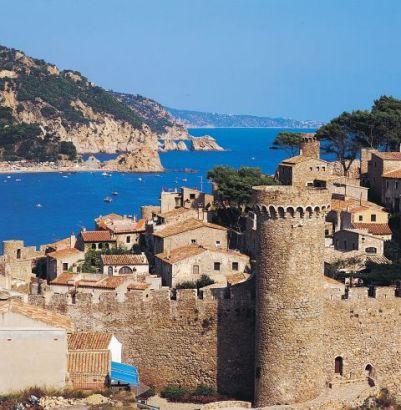
The emblematic walled Vila Vella or Old Town of Tossa is the sole remaining fortified medieval town on the Catalan coast and was listed as an artistic-historic monument in 1931. The original perimeter walls and battlements are largely conserved, with four large towers and three machicolated cylindrical towers. The best-known towers are Joanàs Tower overlooking the bay; Clock Tower at the entrance to the parade ground, thus named because it was the only public clock in the town; and Codolar Tower (or Keep), overlooking Codolar beach. The rectangular castle with a watchtower at the top of the Vila Vella was replaced by the present-day lighthouse.
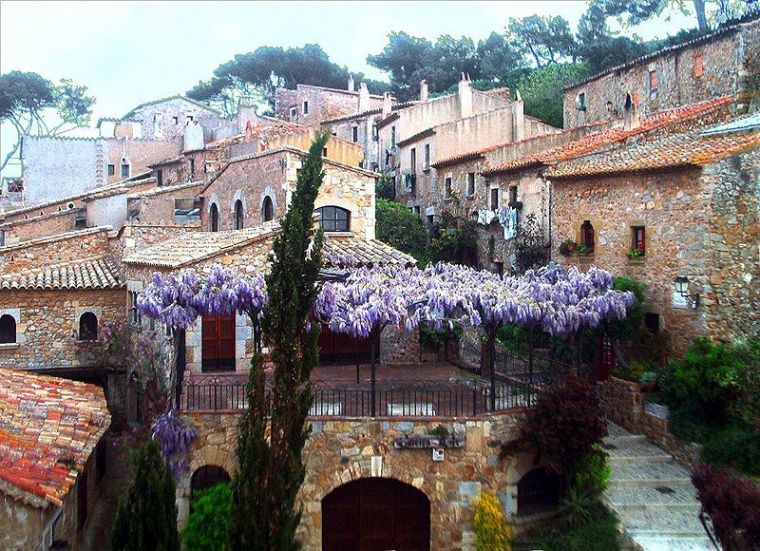
The Vila Vella itself is a charming place with narrow cobbled streets. In the 15th and 16th-century age of splendour, the town boasted eighty houses. A superb voussoired entrance gate gives access to the Vila Vella via the former parade ground. In the 16th century, however, the town started to expand beyond the walls, with the first extra-mural houses built in Sa Roqueta district along the highroad.
Inside the Vila Vella there are the remains of the late-Gothic 15th-century church of Sant Vicenç. The church had a single nave and a 3-sided polygonal chevet; the west arm of the transept was made up of the sacristy and a side chapel; the east arm probably opened out into a row of three chapels. Today, the only remaining covered parts are the apse and the sacristy. The pointed arch of the chevet is sustained by six ribs meeting at a keystone decorated with an image of St Vincent.
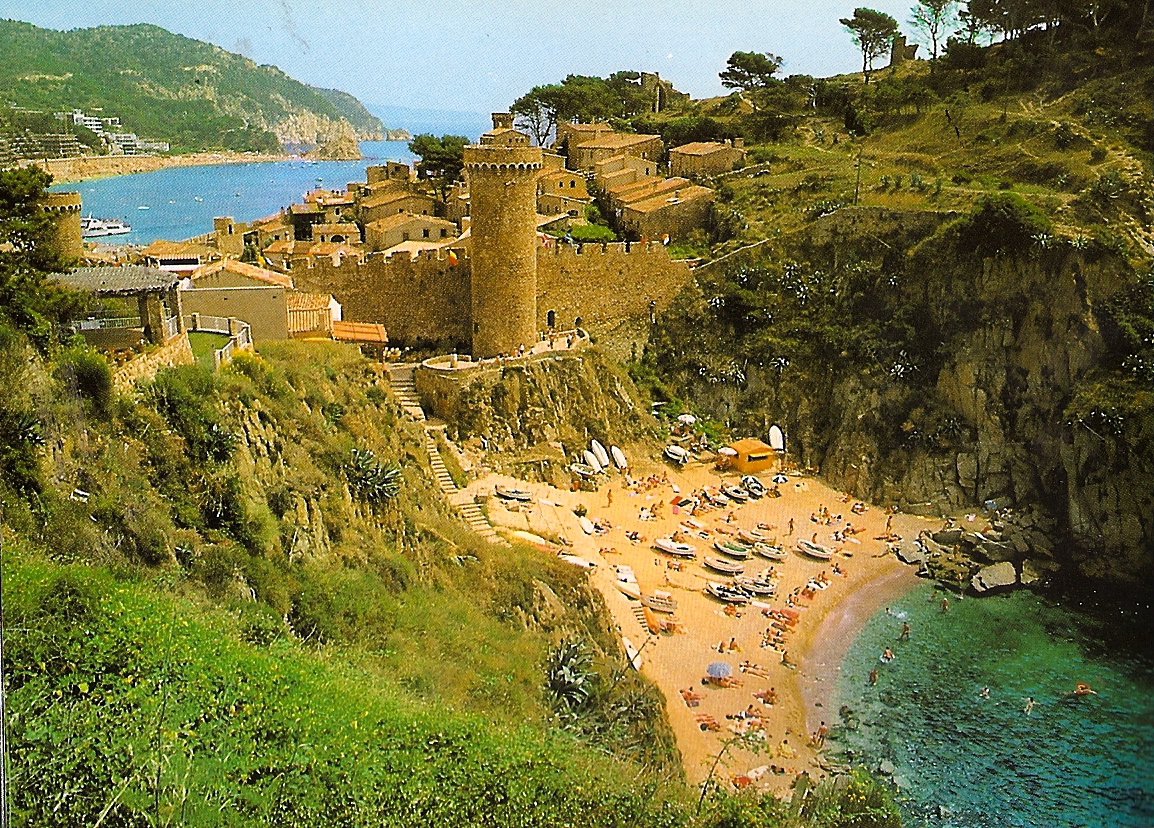
Tossa de Mar has three main beaches: The Tossa Beach (Platja Gran), in front of downtown. This beach is enclosed to the west by the medieval castle. It is 380m long and 60m wide; La Mar Menuda, on the other side of the bay which is180m long and 20m wide. And finally El Codolar, a beautifully secluded and protected beach which falls behind the walls of the old town. Tossa de Mar has always been a progressive town and In 1989 it was the first place in the world to declare itself an Anti-Bullfighting City.
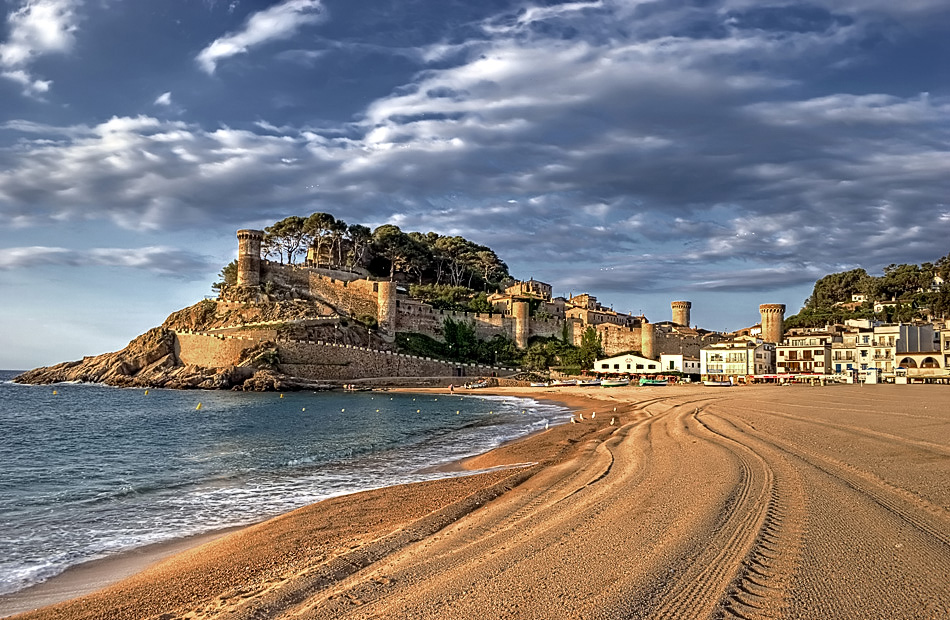
Ver mapa más grande
 0
Like
Published at 6:22 PM Comments (4)
0
Like
Published at 6:22 PM Comments (4)
10 photos that inspire a trip to : The Costa Brava
Wednesday, August 7, 2013
The Costa Brava is peppered with small out of the way beaches surrounded by Mediterranean vegetation, and little coves tucked away among green pine trees … just waiting for you to sit there and let your thoughts drift out to sea. It is one of the most picturesque coastlines in Spain and the locals of many villages have fought hard over the decades to maintain it that way fighting against the powerful waves of tourist and business operators. Here are some photos that might just inspire you enough to visit the Costa Brava next summer or for a weekend break.
1. Playa de Aiguabrava in Begur, Girona.

2. Tossa de Mar Photograph by Frank Tophoven
3. San Feliu de Guixols Photograph by Günter Gräfenhain
4. Pals - Medieval town Photograph by Günter Gräfenhain 
5. Girona - town centre Photograph by Frank Tophoven
6. Dali Theatre and Museum Photograph by Samuel Zuder

7. Playa del Seór Ramón - Cala Curcullada
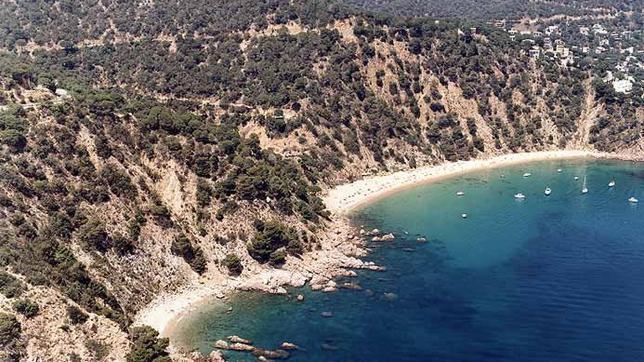
8. Cala Estreta - Palamós

9. Playa de Es Castell - Palamós

10. Platja d'Aro

 0
Like
Published at 12:01 AM Comments (2)
0
Like
Published at 12:01 AM Comments (2)
Spam post or Abuse? Please let us know
|
|